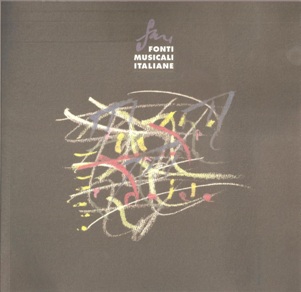Osservazioni sulle fonti della musica vocale da camera e delle cantate di Ferdinando Paër
Abstract
Questo articolo nasce quale breve appendice all’ampio catalogo di fonti a stampa e manoscritte della musica vocale da camera di Ferdinando Paër, pubblicato da Carmela Bongiovanni nei numeri di «Fonti Musicali Italiane» del 2001 e del 2003. In esso vengono riportate dapprima varie testimonianze dirette sulle attività di Paër a Parigi quale autore di musica vocale da camera, interprete vocale e maestro di canto: già negli anni ’20 e ’30 dell’Ottocento, infatti, le principali riviste musicali parigine ed alcuni importanti critici e musicisti, quali Castil-Blaze e Jean-Georges Kastner, indicavano in Paër uno dei maggiori esponenti della romance francese; ma Paër non fu solo autore, bensì anche eccellente interprete di musica vocale cameristica: numerose testimonianze in effetti descrivono le sue esecuzioni alla corte imperiale, dove cantava con la sua voce basso-baritonale, accompagnandosi al pianoforte, i più divertenti brani del repertorio comico per la gioia di Napoleone; egli, inoltre, fu anche uno dei più prestigiosi insegnanti di canto di Parigi: lo provano le sue importanti pubblicazioni di opere didattiche quali i xxiv Exercices pour voix de soprano ou de tenore e le Trente-six Vocalises pour voix de basse-taille ou baryton; lo dimostrano i nomi di alcune cantanti – Giuditta Pasta, Joséphine De Méric, Francilla Pixis – che si formarono o perfezionarono la loro tecnica con lui; lo mostra infine anche la sua nomina nel settembre del 1831 a «Inspecteur de l’instruction et du chant» presso il Conservatorio della capitale francese. Successivamente vengono esposte le integrazioni e le aggiunte vere e proprie al catalogo di fonti redatto dalla Bongiovanni: infatti un primo spoglio di fonti musicali effettuato presso vari archivi e biblioteche permette di completare le descrizioni concernenti ad esempio le romances intitolate La confession e Le Refus; della romanza La première déclaration si è potuto determinare con esattezza, sulla base di alcune testimonianze, le epoche di composizione e di pubblicazione ed è pure stato ricostruito il contesto che ha visto nascere il brano; della cantata Diana e Endimione nuovi documenti aiutano a precisare la data esatta della prima esecuzione; nel caso di Saffo, invece, è una lettera inedita dello stesso Paër a suggerire la possibile datazione della cantata; infine, dalle fonti emerge la musica di due cantate paëriane ancora sconosciute: La famiglia filarmonica e Ulisse e Penelope.
*****
Comments on the sources of Ferdinando Paër’s vocal chamber music and cantatas
This paper originated as a brief appendix to Carmela Bongiovanni’s ample catalogue of the sources (printed and manuscript) of Ferdinando Paër’s vocal chamber music which was included in the 2001 and 2003 numbers of «Fonti Musicali Italiane». First of all, various direct affirmations are cited on Paër’s Parisian activities as composer of vocal chamber music, singer and maître de chapelle; during the Twenties and Thirties of the nineteenth century in fact the leading music periodicals of Paris, together with several important critics and musicians (such as Castil-Blaze and Jean-Georges Kastner), already indicated Paër as one of the major exponents of the French romance. Paër, however, was not only a composer but also an excellent performer of vocal chamber music: there are numerous descriptions of his performances at the Imperial Court, where he accompanied his bass-baritone voice at the piano singing the most amusing pieces from the comic repertoire for the entertainment of Napoleon. In addition, he was one of the most prestigious teachers of singing in Paris: this is even further proved by the publication of his important didactic works, such as xxiv Exercices pour voix de soprano ou de ténor and Trente-six vocalises pour voix de basse-taille ou baryton; by the names of some of the singers who trained or specialized with him – Giuditta Pasta, Joséphine de Méric, Francilla Pixis; finally, by his nomination in September 1831 as «Inspecteur de l’instruction et du chant» at the Conservatory of the French capital.
Subsequently, the integrations and additions to the catalogue of sources compiled by Bongiovanni are presented: a preliminary scrutiny of musical sources carried out at various archives and libraries in fact permits the descriptions to be completed of, for example, the romances entitled La confession and Le refus; it has also been possible to determine with precision the period of composition and publication of the romance La première déclaration, and even to reconstruct the circumstances underlying the birth of the piece; again, new documents are of assistance in gauging the exact date of the first performance of the cantata Diana ed Endimione; in the case of Saffo, instead, it is an unpublished letter from Paër himself which suggests the possible dating of the cantata; finally, the music comes to light of two hitherto unknown Paer cantatas: La famiglia filarmonica and Ulisse e Penelope.
##submission.downloads##
Pubblicato
Fascicolo
Sezione
Licenza
© CIDIM
Tutti i diritti riservati


